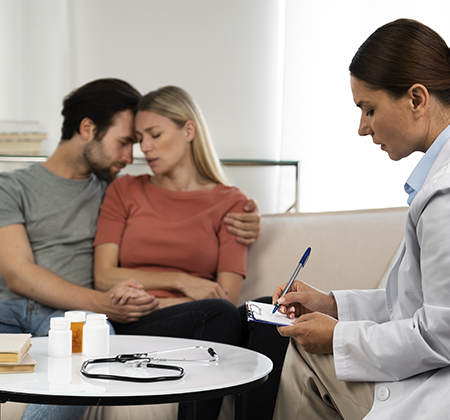I. INFERTILITY DIAGNOSIS
A. When to See a Doctor
- After 12 months of trying (under 35 years)
- After 6 months (over 35 years)
- Immediately if there's a known medical issue (e.g., PCOS, irregular periods, prior surgeries)
B. Common Causes of Infertility
- Ovulation disorders (e.g., PCOS, hypothalamic dysfunction)
- Fallopian tube damage/blockage (e.g., from infections or endometriosis)
- Uterine or cervical abnormalities
- Endometriosis
- Age-related decline in egg quantity/quality
II. INFERTILITY TREATMENT
Treatment depends on the cause, age, duration of infertility, and personal preferences.
A. Lifestyle & Natural Approaches (for mild cases)
- Weight loss or gain (if BMI is off-balance)
- Smoking/alcohol cessation
- Nutrition & supplements (e.g., folic acid, CoQ10)
- Stress reduction
B. Medical Treatments
Ovulation Induction:
- Clomiphene Citrate (Clomid) or Letrozole (Femara) : Oral medications to stimulate ovulation
- Gonadotropins (FSH/LH injections) : Stronger ovulation inducers
- Requires monitoring via bloodwork and ultrasound
